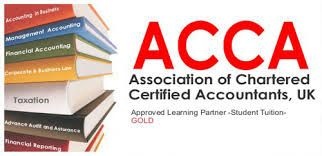The issue of audit quality has always been a key consideration for auditors. Performing a high quality audit means that audit risk is reduced and the audit firm is less likely to issue an inappropriate audit opinion. However, periodic reviews by regulatory authorities on the work performed by audit firms often conclude that audits performed are not always of high quality, despite this being in the best interest of the audit firm. The objective of this article is to provide some insight into why audit firms sometimes compromise audit quality, giving examples of how this happens, and the implications of compromising on audit quality for the profession.
This issue is relevant to P7 in that the Syllabus and Study Guide contains a specific section, C1, which contains a number of learning outcomes in relation to quality control in the context of practice management. In particular, learning outcome C 1 (d) states the following capability: ‘Assess whether an engagement has been planned and performed in accordance with professional standards and whether reports issued are appropriate in the circumstances.’ This requires candidates to apply their knowledge of quality control to a given scenario and a requirement of this nature has appeared several times in past papers.
A REMINDER OF THE SOURCES OF REQUIREMENTS IN RELATION TO QUALITY CONTROL
The International Auditing and Assurance Standards Board (IAASB) has issued two documents relating to quality control. ISQC 1, Quality Control for Firms that Perform Audits and Reviews of Financial Statements, and Other Assurance and Related Services Engagements applies to all firms of professional accountants in respect of audits and reviews of financial statements, and other assurance and related services engagements. It should therefore also be applied to non-audit engagements such as reviews of prospective financial information and engagements to perform agreed upon procedures.
ISA 220, Quality Control for an Audit of Financial Statements is specific to audit engagements and contains specific requirements that should be adhered to in the performance of any audit. ISA 220 contains requirements in relation to:
- Leadership responsibilities for quality on audits
- Relevant ethical requirements, in particular independence
- Acceptance and continuance of client relationships and audit engagements
- Assignment of engagement teams
- Engagement performance, meaning the direction, supervision and review of an audit, including consultation and engagement quality control reviews
- Monitoring and documentation
A detailed review of all of the requirements is outside the scope of this article, and candidates are encouraged to ensure that they are familiar with the contents of ISA 220 so that they can apply this knowledge to a given scenario and comment on whether an audit has been performed in accordance with the requirements of the ISA.
RECENT DEVELOPMENTS IN RELATION TO QUALITY CONTROL
The IAASB makes specific reference to the issue of audit quality in its latest annual report published in June 2014. The IAASB chairman, Arnold Schlider, in his chairman’s statement, discusses audit quality as a key issue that the IAASB is focussing on. He refers to the IAASB publication entitled A Framework for Audit Quality, the objective of which is to raise awareness of the key elements of audit quality; encourage stakeholders to reflect on ways to improve audit quality; and facilitate greater dialogue among stakeholders on the topic. (The Consultation Paper on which this Framework document is based is listed as an examinable document for P7 INT for June 2015). He also mentions the IAASB webpage, ‘Focus on Audit Quality,’ which was launched in early 2014 to provide supplemental material supporting awareness and use of the Framework. It is clear that the IAASB want to engage not only with auditors but also with users and preparers of financial statements to encourage debate on audit quality.
The IAASB Work Plan for 2015–16 is entitled Enhancing Audit Quality and Preparing for the Future, emphasising the prominence of audit quality in the work programme of the IAASB. In addition, the board has recently commenced a survey on audit quality, focussing on how audit firms apply ISQC1 and the difficulties faced by smaller audit firms in meeting the requirements.
It is not just the IAASB that perceives audit quality as a matter of debate. Other regulatory bodies such as the UK Financial Reporting Council (FRC) is interested in promoting audit quality and its Annual Reports on Audit Quality Inspections feature detailed commentary on the improvements that audit firms can make to enhance audit quality.
WHY IS AUDIT QUALITY A CONCERN?
The regulatory bodies have a role to play in promoting audit quality as this will in turn increase public confidence in the audit process and in financial reporting. As mentioned in the introduction, it is in the best interests of audit firms to conduct a high quality audit. So, it may be surprising to find that when inspections are carried out on the conduct of audits, the regulatory bodies come across many instances where audit quality is lacking.
Audit firms are faced with great pressures which may lead to them compromising audit quality. Pressures can be in the form of tight deadlines and restrictions on audit fees, issues relating to competence, ethical dilemmas, and the extent of judgment that is required when auditing certain balances and transactions. Some examples are given below to illustrate the effect of these pressures on audit quality.
Tight deadlines and restrictions on audit fees – the FRC comments in its 2011 – 2012 Annual Report on Audit Quality Inspections that ‘a company’s audit should represent value for money. Nevertheless, substantial fee reductions may lead the auditor to reduce valuable audit work and therefore compromise audit quality.’ Fee pressures are a commercial reality and audit firms will react to fee pressure by seeking efficiencies in the audit. This can manifest in many ways, for example, reducing sample sizes, and increasing materiality levels especially in group situations. A particular way to make the audit more efficient is to ‘offshore’ certain audit procedures in an arrangement whereby some of the audit work is performed by audit personnel who are not ‘full’ members of the audit team, they may be located in a foreign country where the labour costs are lower. This practice raises audit quality issues in that these personnel may not have a good knowledge of the audit client and the quality of the audit evidence produced may be questionable.
Competence – if auditors are not technically competent to perform audit work there is a clear impact on the quality of work performed. For example, the IAASB comments in its 2015–16 Work Plan that audit inspections have found instances where the person selected to perform engagement quality control reviews was not competent to do so. Given that engagement quality reviews are conducted for high risk audit engagements using inexperienced auditors to perform such reviews can create a potentially serious hazard for the audit firm in that it is much more likely that an inappropriate opinion could be issued.
Ethical dilemmas – a common example is where the audit firm provides non-audit services to the audited entity. Audit firms should be familiar with the concept that providing non-audit services creates a threat to objectivity, in particular a self-review threat, and audit firms also should be accustomed to assessing the significance of the risk and responding with the use of appropriate safeguards or by not providing the non-audit service. However there may be circumstances where the threat is overlooked, so compromising audit quality. For example, if an audited entity changes status and becomes listed (a public interest entity) then while it may previously have been acceptable to provide a non-audit service with the appropriate safeguards, the provision of the non-audit service may not be acceptable given the new status of the audited entity. This issue was picked up by the FRC in its 2014 round of audit quality inspections.
Extensive use of judgment – this is very much linked to professional scepticism (see ‘Related links’ for further reading). Audit inspectors often comment that the audit of judgmental balances such as fair values and impairment is lacking in quality. The FRC’s 2014 Annual Report on Audit Quality Inspections states that ‘Limited evidence that [audit] firms have robustly challenged management particularly in respect of the appropriateness of key assumptions and other judgments was a key concern. Firms, with the assistance of audit committees, should ensure they appropriately challenge management.’ The report comments that audit firms often fail to challenge the feasibility of business plans prepared by management, as well as assumptions relating to fair value, impairment and the valuation of tangible and intangible assets.
These are just some examples of instances where audit quality has been compromised, as identified by audit inspections. The objective of the inspections is to highlight the weaknesses in audit quality and to recommend improvements. It is up to the audit firm whether or not they respond to the recommendations, but it is in their interest to do so, and there are calls by the IAASB to formalise the means by which audit firms demonstrate that they have taken such recommendations on board.
CONCLUSION
By emphasising the issue of audit quality in its current Work Plan, the IAASB is making it clear that audit quality is something to be taken seriously. Higher quality audits and public confidence in audit reports issued should reduce the ‘expectation gap’. However with audit firms coming under pressure to cut fees, produce competitive tender documents and provide ‘added value’ to the audit in the form of non-audit services, it is easy to see why audit quality is often compromised. Future changes to make the requirements of ISQC1 and ISA 220 more robust could help, as will promoting the use of professional scepticism in the conduct of all audits.
Written by a member of the Paper P7 examining team
Note: Some of the documents referred to in this article are NOT examinable documents, namely the IAASB Work Plan 2015–16 and the FRC Annual Reports on Audit Quality Inspections. They have been referred to in this article as they contain useful illustrations of why audit quality is an important current issue.



